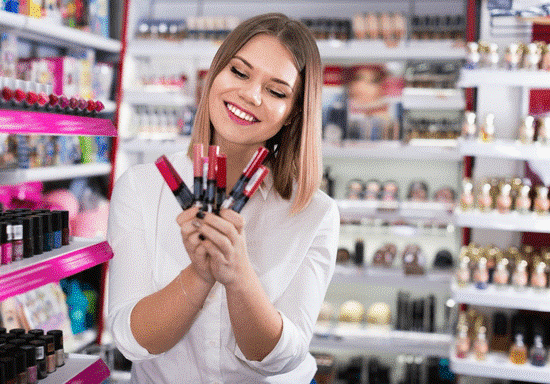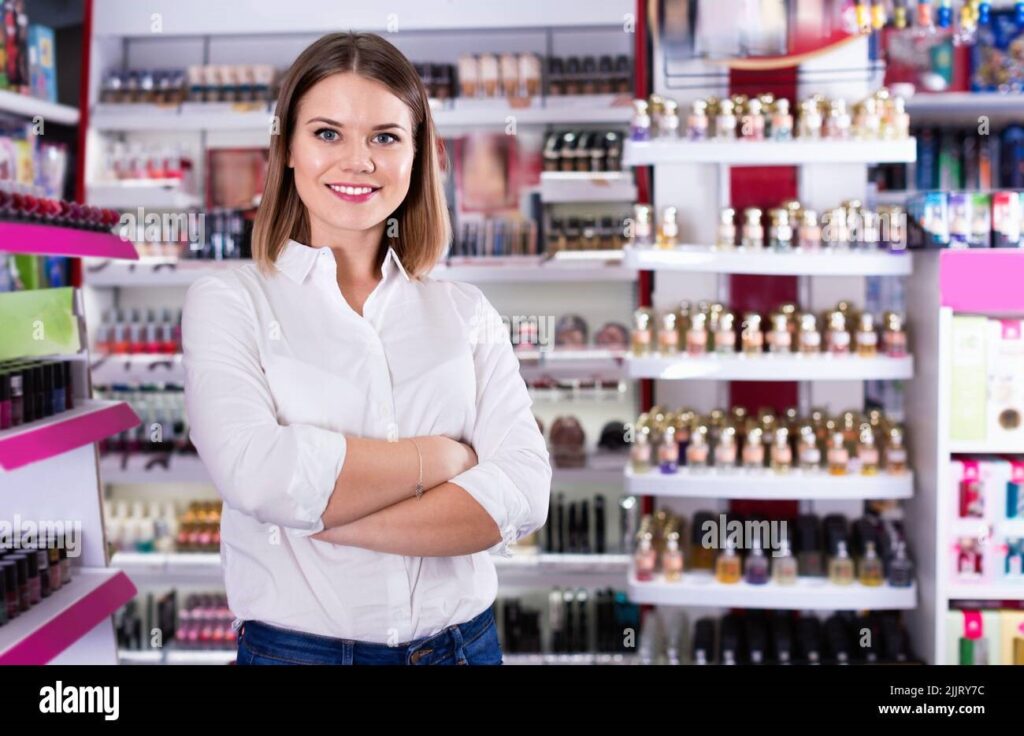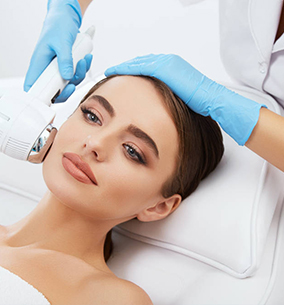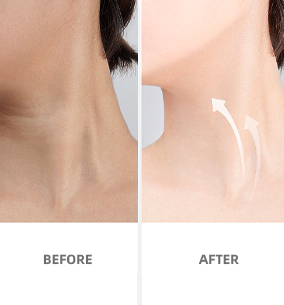From 2022 to 2027, the premium cosmetics market is expected to develop at a compound annual growth rate (CAGR) of 8.9%, reaching an estimated value of USD 55.50 billion. The growing desire for upscale skincare products as customers concentrate on enhancing the look and health of their skin is what is fueling this trend. The ease with which one may purchase online has propelled the e-commerce sales of high-end cosmetics, propelling the industry’s expansion. New growth potential has been created by the premiumization of products through innovations in formulations and packaging. Comprehensive market segmentation is included in the report, which covers a wide range of product categories, including skincare, color cosmetics, hair care, and fragrances. Geographical areas and offline and online distribution strategies are also examined. The research conducts a complete analysis of the market’s drivers, trends, and problems. Follow us for more information about Cosmetic Sales Figures Worldwide and Sales Statistics of Cosmetic Products.

Reviewing sales statistics and data related to the cosmetic product market in major global economies and providing insights into trends.
- United States: Historically, one of the biggest cosmetic sales figures worldwide has been in the United States. Cosmetics, such as skincare, makeup, and hair care items, have always been in great demand.
- China: In recent years, the Chinese market for cosmetic products has grown remarkably. The nation’s growing middle class and expanding disposable income have fueled a demand explosion for cosmetics. Chinese customers have demonstrated a penchant for premium foreign brands, especially those originating from South Korea and Europe.
- Japan: With a focus on skincare and cutting-edge beauty goods, Japan boasts a well-established industry for cosmetic items. Japanese buyers are very picky about the efficacy, safety, and quality of products.
- South Korea: The country has become well-known around the world for its creative and significant beauty sector, sometimes known as “K-beauty.” Korean skincare and makeup products, with their distinctive formulas and emphasis on attaining a perfect complexion, have become increasingly popular globally.
- European Union: The market for cosmetic products in Europe is made up of a variety of nations with different laws and customer preferences.
- Brazil: The country’s beauty-conscious populace has fostered a booming demand for cosmetic products. Products in the skincare, hair care, and fragrance categories are especially well-liked.
- India: The country’s middle class is expanding, the country is becoming more urbanized, and the country’s views on beauty are all contributing to the cosmetic product market’s recent explosive expansion.
Top Cosmetic Markets: A Global Overview
Overview of the top global cosmetic markets
- United States: A significant participant with strong demand from consumers for cosmetics, skincare, and hair care products. Natural goods, sustainability, and influencer marketing are among the newest trends.
- China: A rapidly expanding middle class is driving this market. Customers like premium foreign brands that are available on e-commerce sites.
- Japan: reputable market that specializes in skincare and cutting-edge cosmetics. For Japanese customers, efficacy, safety, and quality come first. Anti-aging and technological integration are trends. This country has one of the highest cosmetic sales figures worldwide.
- South Korea: known for its emphasis on immaculate skin and “K-beauty.” Sheet masks, BB creams, and multi-step skincare are all current trends.
- European Union: This market is diverse and has a need for ecological, ethical, and natural products. It’s critical that ingredient labels be transparent. Customized skincare and anti-aging products are in demand.
- Brazil: Thriving market with customers who value appearance. Popular skincare products emphasize natural components from the Amazon rainforest, as do hair care products and scents.
- India: The expanding middle class influences this market. provides a selection of goods, including both foreign brands and classic Ayurvedic formulas. Color cosmetics, hair care, and skincare products are popular.

Read more: Key Considerations for Packaging Cosmetic and Personal Care
Regional Variances in Cosmetic Consumption Patterns
Regional Differences in the Consumption Patterns of Cosmetics: Western nations stress self-expression and personal grooming. Varied product tastes, organic and natural goods, and moral business conduct. Social media and influencer marketing come into play. Sales Statistics of Cosmetic Products further illustrate these regional differences in consumption patterns.
- East Asia: China places a premium on global brands and status. Japan is a leader in product safety and skincare. K-beauty gained popularity in South Korea because of its multi-step skincare regimen.
- Due to its tropical environment, Southeast Asia offers sun protection items. Brightening and whitening of the skin are common. Products are certified halal for the Muslim community.
- Middle East: high demand for high-end makeup. emphasis on superior and enduring results. bold and glitzy cosmetic styles.
- Latin America: A market focused on beauty. Popular skin care, hair care, and perfumes. Put an emphasis on organic and natural components. vivid and colorful cosmetics.
- Africa: different trends in different areas. North Africa is a luxury brand’s favorite. Africa’s subcontinent has a wide range of skin tones and hair types; thus, it needs locally created goods. use of organic materials.
ns for Key Players in the Beauty Industry
- L’Oréal: is among the biggest firms in the world of cosmetics, skincare, hair care, makeup, and fragrances. steady expansion via new product launches, marketing plans, the opening of new markets, and cosmetic sales figures worldwide.
- Estée Lauder Companies: is a global company that specializes in high-end cosmetic goods. robust growth propelled by the expansion of the global market and high-end skincare.
- Procter & Gamble (P&G): is a global manufacturer of consumer products with a big influence in the cosmetics industry. steady expansion via marketing, innovation, and acquisitions.
- Coty Inc: is an international beauty conglomerate featuring skincare, color cosmetics, and fragrance products. pursuing digital transformation and brand reinvention as regeneration tactics.
- Shiseido: is a global Japanese company well-known for skincare, cosmetics, and fragrances. Put your attention on R&D spending and expanding into foreign markets.
- The Body Shop: is an international cosmetics company with a focus on sustainability and ethics. By satisfying consumer demand for natural, cruelty-free products, we can maintain growth.
- Sephora: is a well-known beauty boutique offering an extensive selection of goods. e-commerce growth via investing in the online platform and growing physical stores.

Impact of Socio-Economic Factors on Cosmetic Sales
The demand for cosmetics is significantly shaped by economic variables. Macroeconomic factors, such as regular price, comparable brand price, and reference price, have an impact on cosmetic product pricing. Additionally, the price of cosmetic surgery treatments is influenced by regional economic variables such as real estate prices, the size of the population, and the cost of living index. Higher disposable income levels are often associated with higher demand for cosmetics, which boosts industry competition. When it comes to cosmetics, factors including celebrity influence, product presentation, and brand reputation also play a role in customers’ decisions to buy and better cosmetic sales figures worldwide. Companies that manufacture cosmetics may improve their marketing tactics, increase sales, and cultivate client loyalty by comprehending these economic elements and how they affect consumer behavior. Sales Statistics of Cosmetic Products in Prominent Countries further highlight these trends.
E-commerce Boom: The Shift in Consumer Buying Behavior
The growth of e-commerce has changed how consumers make purchases. Key details about its effects are as follows:
- Convenience: Online shopping transforms the shopping experience by enabling customers to make purchases whenever and wherever they choose.
- Large product variety: Online retailers have a greater selection than brick-and-mortar establishments. Customers are able to evaluate, compare, and make knowledgeable judgments.
- Personalization: Data-driven suggestions make shopping more enjoyable by assisting customers in finding items that suit their tastes.
- Competitive pricing: Because they have fewer overhead expenses, online shops frequently provide lower prices. Purchase incentives include loyalty programs, sales, and discounts.
- Reviews and social proof: Customer trust in the appropriateness and quality of products is increased by online reviews, which have an impact on purchasing decisions.
- Smooth transactions: Online shoppers are encouraged to choose secure payment methods since they make the process safe and easy.
- Mobile commerce: Using a smartphone to make purchases via apps and mobile-friendly websites is what drives mobile buying.
- Return policies and customer service: To guarantee a satisfying purchasing experience, e-commerce merchants place a high priority on accommodating returns and providing prompt assistance.

Emerging Markets: Opportunities and Challenges for Cosmetic Brands
For cosmetic brands, emerging markets present both opportunities and challenges.
Possibilities:
- An expanding middle class with more money to spend.
- quality-conscious customers who are concerned about appearance.
- The potential for market expansion as a result of the huge and growing population.
- Using contemporary retail stores and e-commerce to create new distribution channels.
- One of the challenges is adjusting to different cultural standards and preferences for beauty.
- Finding a way to make products affordable without sacrificing quality.
- Handling intricate regulatory frameworks.
- Having to contend with local and international brands.
- Overcoming challenges related to logistics and infrastructure.
Brands need to comprehend local consumers, adjust to cultural quirks, and maintain cosmetic sales figures worldwide. to compete in new markets.
Read more: Exploring Tastes and Trends in Skincare and Beauty for 2024
Regulatory Landscape: How Policies Shape Cosmetic Sales
Regulations influence cosmetic sales in the following ways:
- Ingredient limitations and safety requirements.
- Transparency in labeling requirements.
- Animal testing regulations.
- Credibility requirements and certifications.
- Rules for advertising and marketing campaigns.
- Harmonization of laws to ensure international adherence.
- Trade restrictions and market access.8. Effect on customer confidence and perception.
To preserve sales and brand image, brands must remain educated, adhere to legal requirements, and place a high priority on customer safety and ethics.

A brief introduction of Beperfect company
Beperfect is a top producer and supplier of premium cosmetics and skincare items. Beperfect, which is dedicated to sustainability and innovation, provides a wide variety of formulae to meet the changing demands and tastes of the contemporary customer. In order to give its clients, the finest possible beauty solutions, Beperfect stays on top of industry trends and makes use of influencer marketing.











